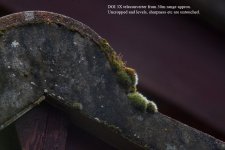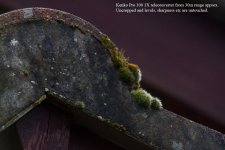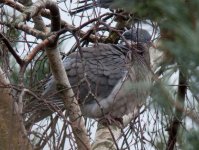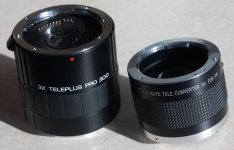Many thanks for the comparison done. The barlow shot looked ok, but the converter a bit better, I think. I understand the need for "perfecting" the barlow contrast - perhaps via flocking it, thus getting rid of unwanted reflections. One other thing I believe have read, is putting the barlow lens as close as possible to the camera (you did a special mounting). I have on order a 2x barlow (celestron ultima. Had a gso barlow before, but accidentally scratch it while fiddling around with it...thought I'd give it one more go) - and I'm not after a 3x - 2x is ok, but putting it so close to the camera may give me less than 2x, is it so? well, if it's so, no problem, as long as it gives me good picture detail. Long reach is ok, but I prefer to work within the closest focus I can get, up to 30m, perhaps more on bigger birds. (though I more often chase after the smaller ones)
to sum it up: did you see an increase in picture quality having the barlow lens close to the film plane, than further away (if all flocked properly) and how much magnification do one loose?(or not)
Your opinion will be VERY appreciated, so thanks again.












